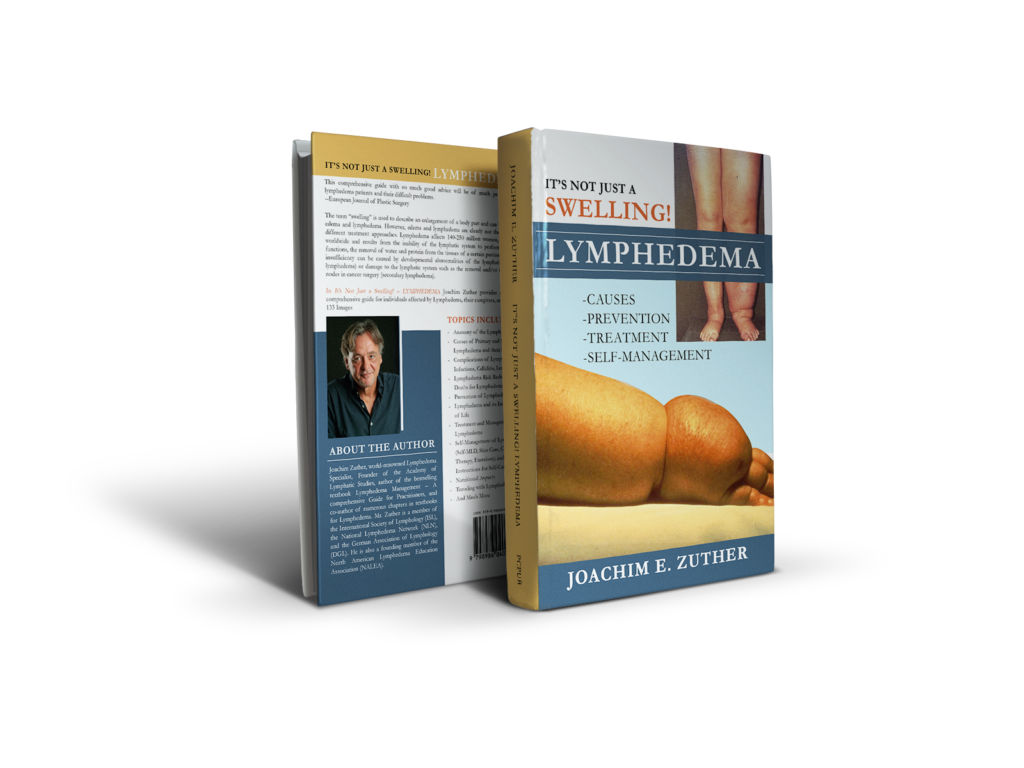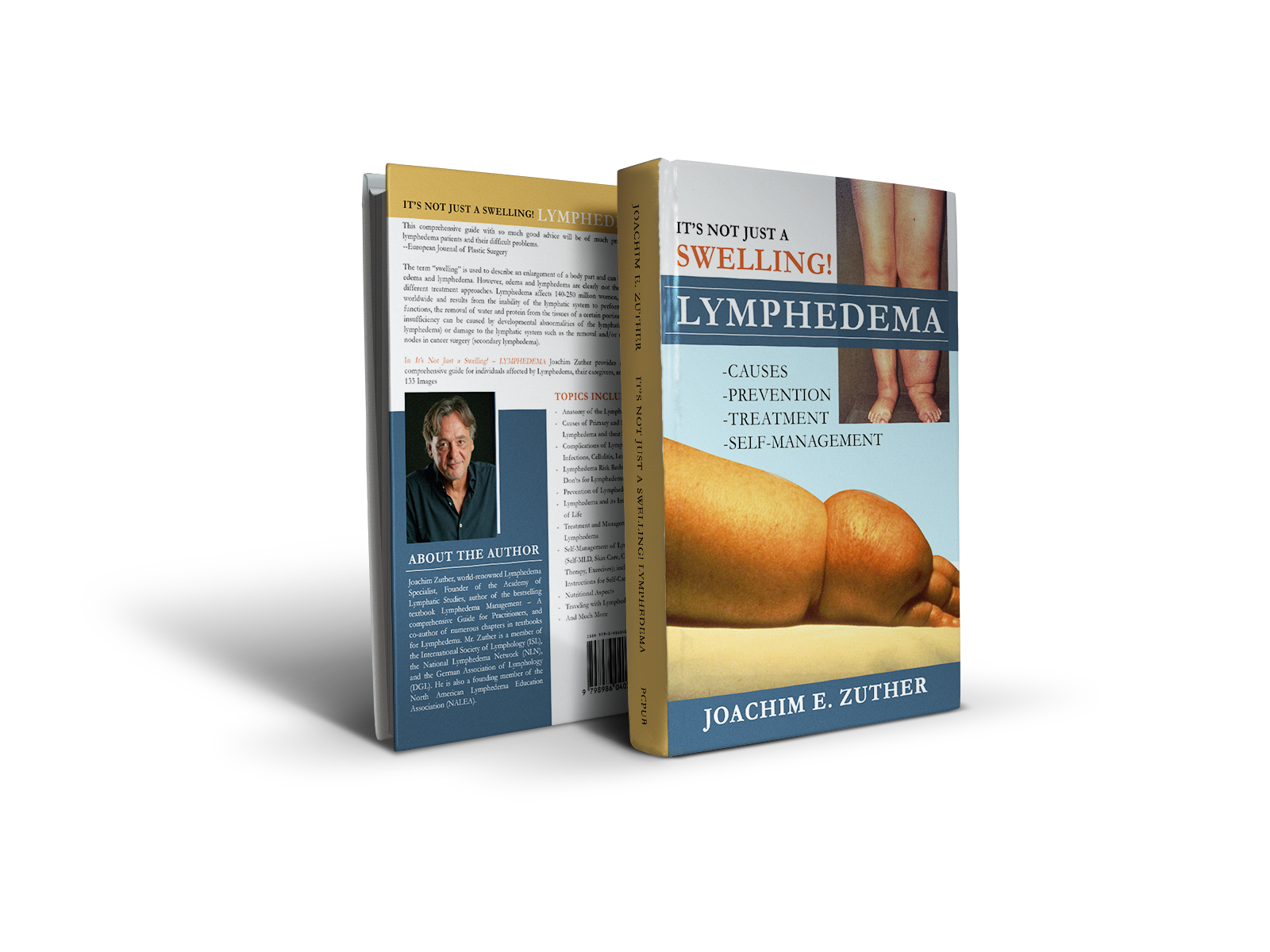Dear Friends in the Lymphedema Community!
I am very happy to report that the publication “It’s Not Just a Swelling! Lymphedema” is a big success; many of you who already read and use it have reported back to me indicating that the contents are very useful and a great help in dealing with your Lymphedema.
It is available on Amazon and Lulu.
 The focus of this patient-oriented book is to provide a complete and comprehensive guide to increase awareness and understanding of this often-neglected condition, and to offer a helpful guide to patients, their caregivers, family members, and therapists in navigating important aspects of Lymphedema care and management. In addition, you may mention this book to any physician not familiar with Lymphedema and its care – and there are many!
The focus of this patient-oriented book is to provide a complete and comprehensive guide to increase awareness and understanding of this often-neglected condition, and to offer a helpful guide to patients, their caregivers, family members, and therapists in navigating important aspects of Lymphedema care and management. In addition, you may mention this book to any physician not familiar with Lymphedema and its care – and there are many!
The book is now also available as a hardcover; this is in addition to the E-book (Kindle) and paperback version.
Contents of the book include:
Information about the Lymphatic System
It is important that patients have a general knowledge about the lymphatic system in order to understand the condition and how to treat and manage it effectively.
This chapter includes a description of the components and function of the lymphatic system, including lymph nodes, lymph vessels, components of lymph fluid, and the lymphatic drainage of body areas, including arms, legs, head and neck, torso and genital areas. It includes a detailed explanation of all lymphatic components with an explanation of what happens if any of these components fail, or are affected by surgery, radiation, or trauma.
Information on Lymphedema, Lipedema, and Chronic Venous Insufficiency (CVI)
In this chapter, lymphedema and the reasons why it develops are explained in detail.
It includes descriptions and explanations of primary, secondary, and pediatric Lymphedema. The stages of Lymphedema, as well as its complications, to include infections, leakage (lymphorrhea), axillary web syndrome, and what to do in case any of these complications develop. The impact on the quality of life Lymphedema causes, which can be considerable and affect the well-being of patients around the globe, is explained in detail.
The various techniques used to diagnose Lymphedema (Lymphscintigraphy, MRI, Ultrasound, Bioimpedance, and CT-Scans, others), Lipedema, and CVI are covered as well.
Treatment
Finally, this important chapter covers everything you need to know about the proper and effective management of Lymphedema and related conditions. Included are detailed descriptions of treatment techniques used by certified lymphedema therapists (how many treatments are necessary and recommended), as well as important techniques of self-management.
Techniques of self-MLD and self-bandaging, decongestive exercises, and skin care for upper and lower extremity Lymphedema are explained in detail using text and images. Other techniques, including the use of compression pumps, and various forms of exercises (resistive, aerobic, aquatic, breathing, and Yoga) geared towards the management of Lymphedema are explained and described.
Other contents in this chapter include a description of the various surgical procedures used for the treatment of Lymphedema, including liposuction, and reconstructive techniques.
The use of certain pharmaceuticals (diuretics, antimicrobials, antibiotics) for Lymphedema, as well as Lymphedema risk-reduction practices and nutritional aspects (proteins, fluids, salt, vitamins, and supplements), is described and explained.
Finally, helpful guidelines for traveling with Lymphedema and how to effectively measure and care for compression garments are also included.
If you like the book, please also leave a review on the site you used to purchase it – thank you!


 Joachim Zuther, Lymphedema Specialist.
Joachim Zuther, Lymphedema Specialist. 

I would like to have more information on purchasing this book and other resources
Aubrey, you can order from Amazon here: https://www.amazon.com/Its-Just-Swelling-Lymphedema-Self-Management/dp/B0B3952K2D/ref=sr_1_2_sspa?crid=9QMYK2O7C4QO&keywords=lymphedema+books&qid=1656840246&sprefix=%2Caps%2C196&sr=8-2-spons&psc=1&spLa=ZW5jcnlwdGVkUXVhbGlmaWVyPUEyNExSNFIzV08yUzczJmVuY3J5cHRlZElkPUEwMjAzMzk1VUlJTzZaOUkxUjg1JmVuY3J5cHRlZEFkSWQ9QTA5MDI3NjVERDg1RENXUThZTUcmd2lkZ2V0TmFtZT1zcF9hdGYmYWN0aW9uPWNsaWNrUmVkaXJlY3QmZG9Ob3RMb2dDbGljaz10cnVl
I purchased book
I haven’t had a chance to read it
But I know they are alot of interesting things
To learn to read and share with family, friends and physician and within yourself!
As a lymphedema patient, I try to be careful and how to handle self care!
I purchased book from Amazon